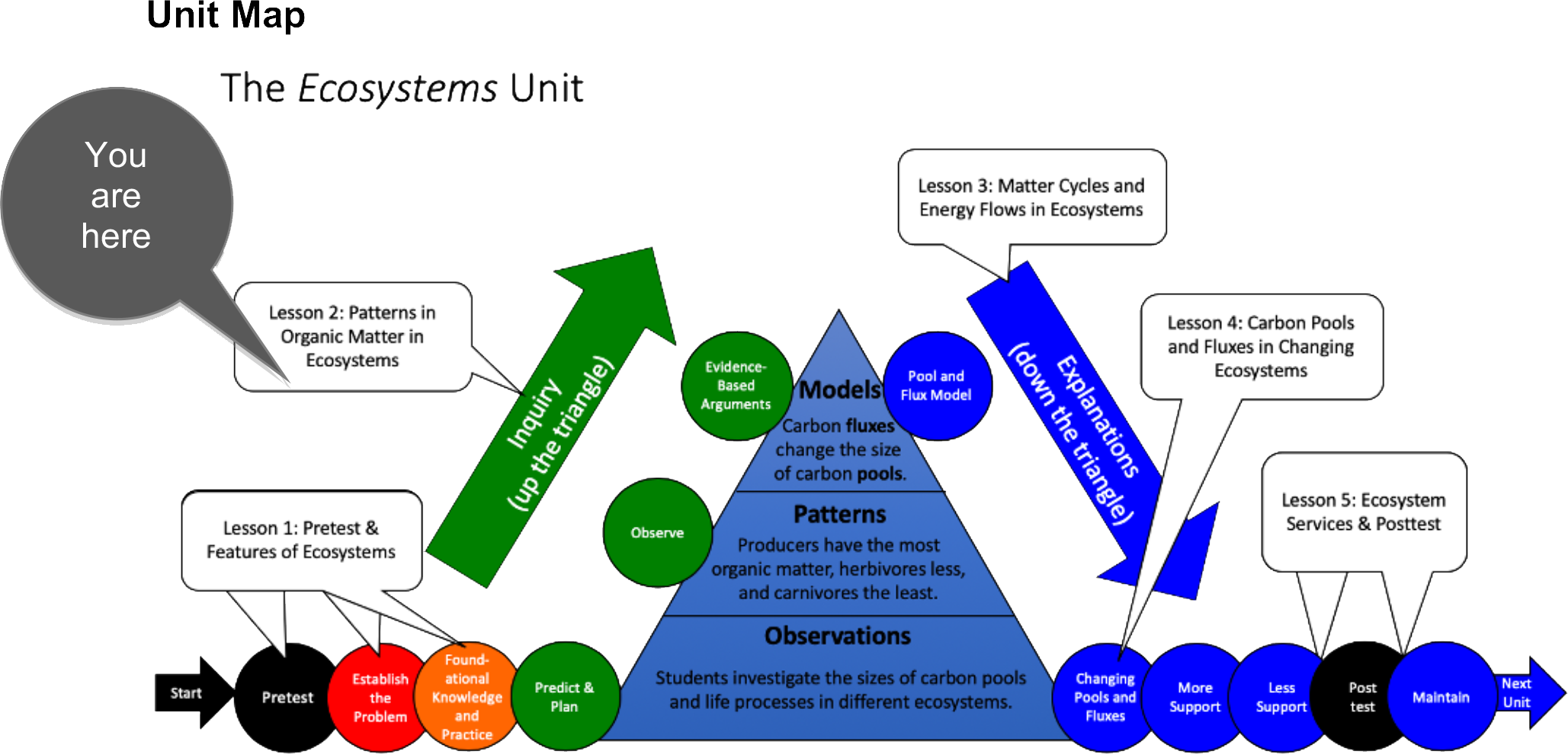Transformations in Matter and Energy Carbon TIME is an NSF-funded partnership led by Michigan State University
Ecosystems | Lesson 2 - Patterns in Biomass in Ecosystems
Overview
Students use a simulation of a meadow ecosystem to view changes in the organic mass of populations of producers, herbivores, and carnivores from different initial population. They then compare their findings with different real ecosystems to highlight an important common pattern: the organic matter pyramid. In most terrestrial ecosystems, there is more organic matter in producers than in herbivores and more organic matter in herbivores than in carnivores. They will use carbon-transforming processes to explain this pattern in Lesson 3.
Guiding Question
What are the patterns in organic matter pools in ecosystems?
Activities in this Lesson
- Activity 2.1: Predictions and Planning for the Meadow Simulation (30 min)
- Activity 2.2: The Meadow Simulation (50 min)
- Activity 2.3: Evidence-Based Arguments for the Meadow Simulation (40 min)
- Activity 2.4: Organic Carbon Pools in Other Ecosystems (20 min)
Unit Map

Target Student Performance
|
Activity |
Target Performance |
|
Lesson 2 – Patterns in Organic Matter in Ecosystems (students as investigators) |
|
|---|---|
|
Activity 2.1: Predictions and Planning for the Meadow Simulation |
Students make predictions about changes in the mass of different populations in a meadow ecosystem and plans to maximize the fox population. |
|
Activity 2.2: The Meadow Simulation |
Students identify patterns in relationships among organic mass of populations at different trophic levels in a simulated meadow ecosystem (the organic matter pyramid). |
|
Activity 2.3: Evidence-Based Arguments for the Meadow Simulation |
Students develop arguments from evidence about possible patterns in relationships among mass of populations at different trophic levels in a simulated meadow ecosystem (the organic matter pyramid). |
|
Activity 2.4: Organic Carbon Pools in Other Ecosystems |
Students describe patterns in relationships among mass of populations at different trophic levels in a other ecosystems (the organic matter pyramid). |
NGSS Performance Expectations
High School
- Ecosystems: Interactions, Energy, and Dynamics. HS-LS2-1. Use mathematical and or computational representations to support explanations of factors that affect carrying capacity of ecosystems at different scales.
Middle School
- Interdependent Relationships in Ecosystems. MS-LS2-2. Construct an explanation that predicts patterns of interactions among organisms across multiple ecosystems.
- Matter and Energy in Organisms and Ecosystems. MS-LS2-4. Construct an argument supported by empirical evidence that changes to physical or biological components of an ecosystem affect populations.
- Matter and Energy in Organisms and Ecosystems. MS-LS2-1. Analyze and interpret data to provide evidence for the effects of resource availability on organisms and populations of organisms in an ecosystem.

 Download PDF of Lesson 2 Teacher's Guide
Download PDF of Lesson 2 Teacher's Guide